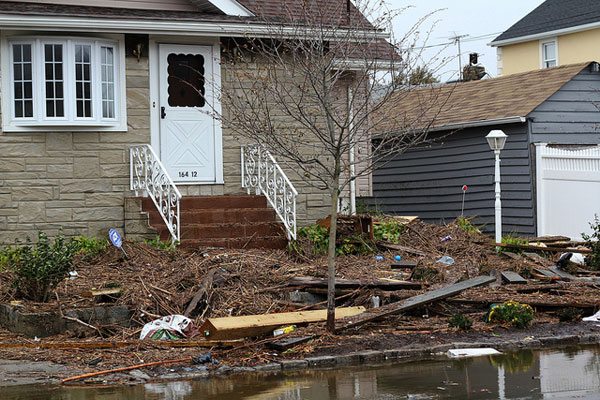
September 12, 2017; Governing
The hurricane winds have calmed. The torrential rains have stopped falling and sea levels have returned to normal. In their wake, billions of dollars of physical destruction and millions of disrupted lives need to be rebuilt.
From Texas to Florida, wherever lives were touched by Harvey and Irma, the return of sunshine allows the focus to shift to the task of recovery and rebuilding. For government and community service organizations, the need will be long-term and will test their ability to meet the challenge.
J.B. Wogan, writing for Governing, described the increased demand that disasters bring: “After a natural disaster, there is typically a surge in demand for government aid and services as people start to rebuild their lives. For residents who were already struggling to find employment and pay basic expenses, an environmental disaster only exacerbates their situation.” Immediate needs for food, shelter, medical care, and safety are easy to see; less visible but just as significant are the psychological impacts of trauma and disruptions to social systems, as noted in a recent NPQ article. It’s these that make recovery so taxing.
Even states like Texas and Florida, states that traditionally want the role of their government to be limited, respond to the urgency of the situation powerfully and quickly.
Texas is temporarily expanding the income limit for food stamps. The state is also temporarily expediting benefits, loosening restrictions on what people can buy with government aid, allowing schools to serve free meals to every student impacted by the hurricane—regardless of their income —and reimbursing people for food stamps that might have gone to waste because of the storm…
Sign up for our free newsletters
Subscribe to NPQ's newsletters to have our top stories delivered directly to your inbox.
By signing up, you agree to our privacy policy and terms of use, and to receive messages from NPQ and our partners.
“It’s gratifying to see,” says Jim Weill, president of the Food Research and Action Center, a national anti-hunger organization. The U.S. Department of Agriculture (USDA) “has responded quickly and effectively and appropriately to the crisis.”
Communal infrastructure can also become a casualty of events like Harvey and Irma. For example, a survey of more than 600 Houston-area childcare providers found “10 percent say they’ve experienced major damage or saw their facilities completely destroyed.” The staff who provide human services are also victims of the storm’s fury, yet must continue to work on behalf of others at risk while their lives may be in tatters.
“A lot of our caseworkers and a lot of people who do the frontline work are not financially well off,” says Russell Sykes of the American Public Human Services Association. “When something like this happens, they’re working 24/7, and they may be in the same situations as their clients…It’s a real test of the strength of the whole safety net. I hope what comes of it is a better understanding of how important these programs are.”
After immediate needs have been met and the sense of crisis is past, the storms’ longer-term effects remain, demanding continued resources and attention. Caseloads for years to come will reflect the psychological impact of trauma. People have seen their homes and jobs destroyed. Many have been dislocated and may find it necessary to rebuild their lives in new, unfamiliar communities. They will need ongoing help and support, particularly those who had the least before the storms hit. Katie Olse, who is the executive director of the Texas Alliance for Child and Family Services, described this to Governing as the “aftermath of the aftermath.”
What’s necessary here is a robust safety net of services that will continue to be there for years. Federal and state programs that have been political footballs remain vital to ensuring ongoing help for people in need. Nonprofit organizations need the strength and resources to repair any organizational harm the storms caused, so they can continue to do their share.
Russell Sykes of the American Public Human Services Association said, “It’s a real test of the strength of the whole safety net. I hope what comes of it is a better understanding of how important these programs are.” We will know our grade in the years to come.—Martin Levine













